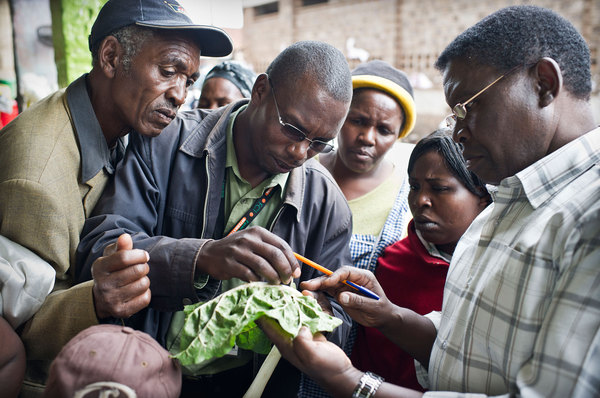Factsheet of the month: February 2016 – Rotation against purple seed stain in soya
At the beginning of January, a new research centre opened in Benin, which aims to boost productivity and incomes of smallholder farmers, and create job opportunities. Researchers based at the Green Innovation Center, which has been funded by the Federal German Ministry for Economic Cooperation and Development (BMZ), will develop tools for training and improve frameworks…
Food Security: Where Environmental Health Meets Community Health
Guest blog by Julie Potyraj If the health of a person depends on the status of their body – genetics, eating habits, age – then environmental health encompasses everything outside of the body. Improving air, soil and water quality, maintaining safe infrastructure, preventing exposure to hazardous substances, and promoting healthy homes and communities are all focuses…
Update: New Pest & Disease Records (27 Jan 16)
We’ve selected a few of the latest new geographic, host and species records for plant pests and diseases from CAB Abstracts. Records this fortnight include the antifungal activities of Chaetomium spp. against Fusarium wilt of tea, the characterization of Alternaria species associated with muskmelon foliar diseases in Beijing municipality of China, and the first report…
Plant clinics help tackle crop diseases in Rwanda
Excerpt from The New Times article, published 22 January 2016 It is a Monday evening and Dominique Nkundukozera, a farmer in Rusatira Sector in Huye District, is seated on a chair at Kinkanga market, with several cassava stems. He had brought the stems for examination by experts at a ‘Plant Health Clinic’ at the market.…
Update: Plant Health News (20 Jan 16)
Here’s a taste of some of the latest stories about plant health, including the wild bananas that could help overcome TR4 Panama disease, the effect of El Niño on potato crops in Peru and the farmers in Tanzania who are being urged to grown drought resistant crops. Click on the link to read more of the…
Collaboration between Plantwise and the University of Queensland
In 2014, Holly alerted our blog followers to the Plantwise factsheet library app, aimed to provide country extension workers with a portable electronic library of pest management factsheets. Since then, there have been in excess of 65,000 sessions of the app by our global users.
Update: New Pest & Disease Records (13 Jan 16)
We’ve selected a few of the latest new geographic, host and species records for plant pests and diseases from CAB Abstracts. Records this fortnight include the first report of Tomato spotted wilt virus of potato in Korea, Iphimeis dives (Crysomelidae) beetle occurrence in beans in the western Parana State of Brazil and the first report of…
Perú: Las clínicas de plantas en los periódicos locales
En las últimas semanas, dos periódicos peruvianos, Andina y Correo, han publicado artículos acerca de las clínicas de plantas Plantwise impulsadas por el Instituto Nacional de Innovación Agraria (INIA) a través de la Unidad de Extensión Agraria de la Estación Experimental Agraria Santa Ana. En 2015, mediante la red de clínicas de plantas establecidas en…
Climate-friendly rice wins 2015 Popular Science award
A new strain of low-methane rice has won Popular Science’s “Best of What’s New” award 2015 for engineering. The new kind of rice, known as SUSIBA2, has been developed by splicing a single gene from barley into rice plants to reduce the amount of methane the rice produces and, ultimately, the amount released into the…
Four new bee species described in Australia – many more remain unidentified
by Miroslav Djuric, DVM, CABI. Reblogged from CABI’s Hand Picked blog. Bee specialists from South Australia have described four new native bees. Three of these bee species have been described as having narrow faces and very long mouths, allowing them to feed on slender flowers found on the emu bush, a hardy native of the…


